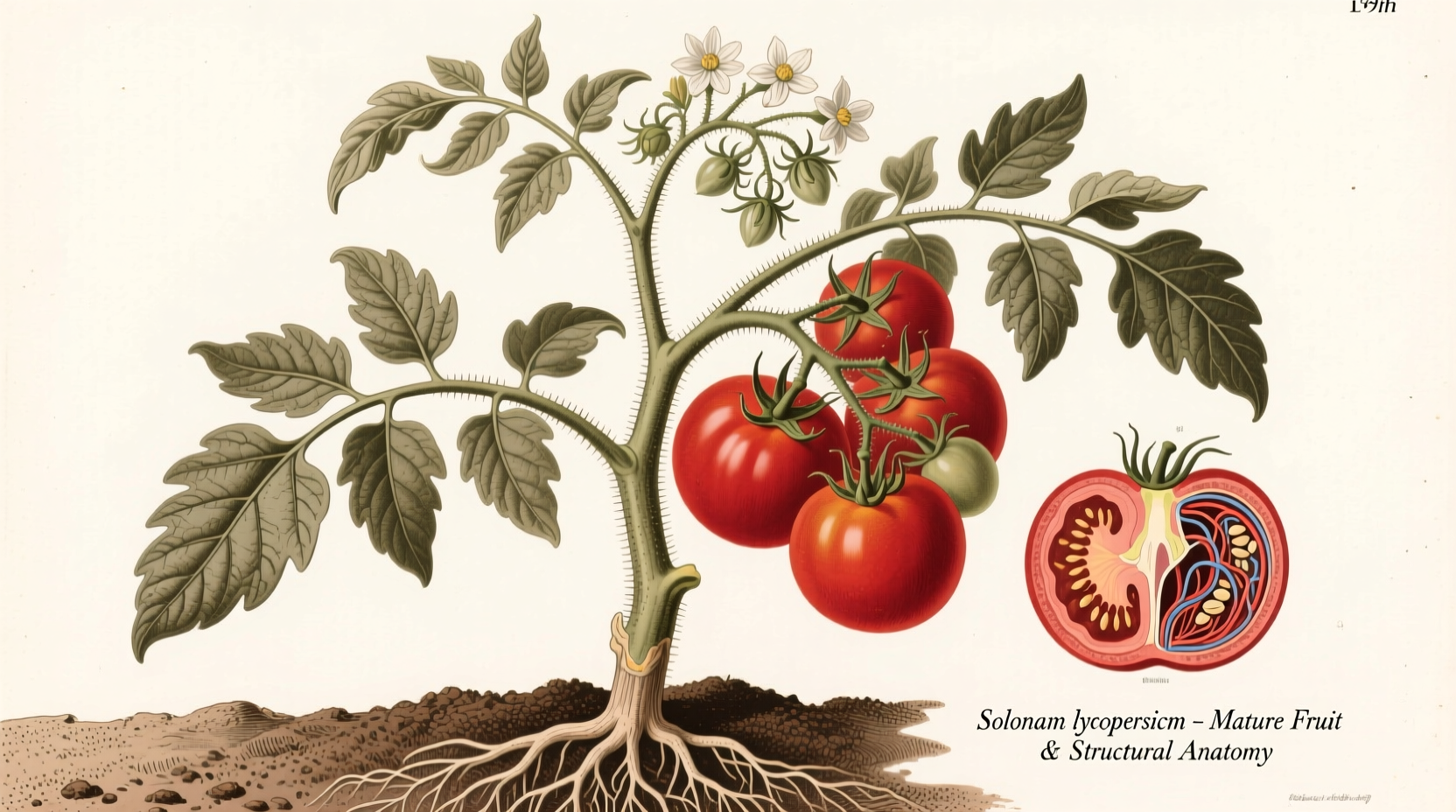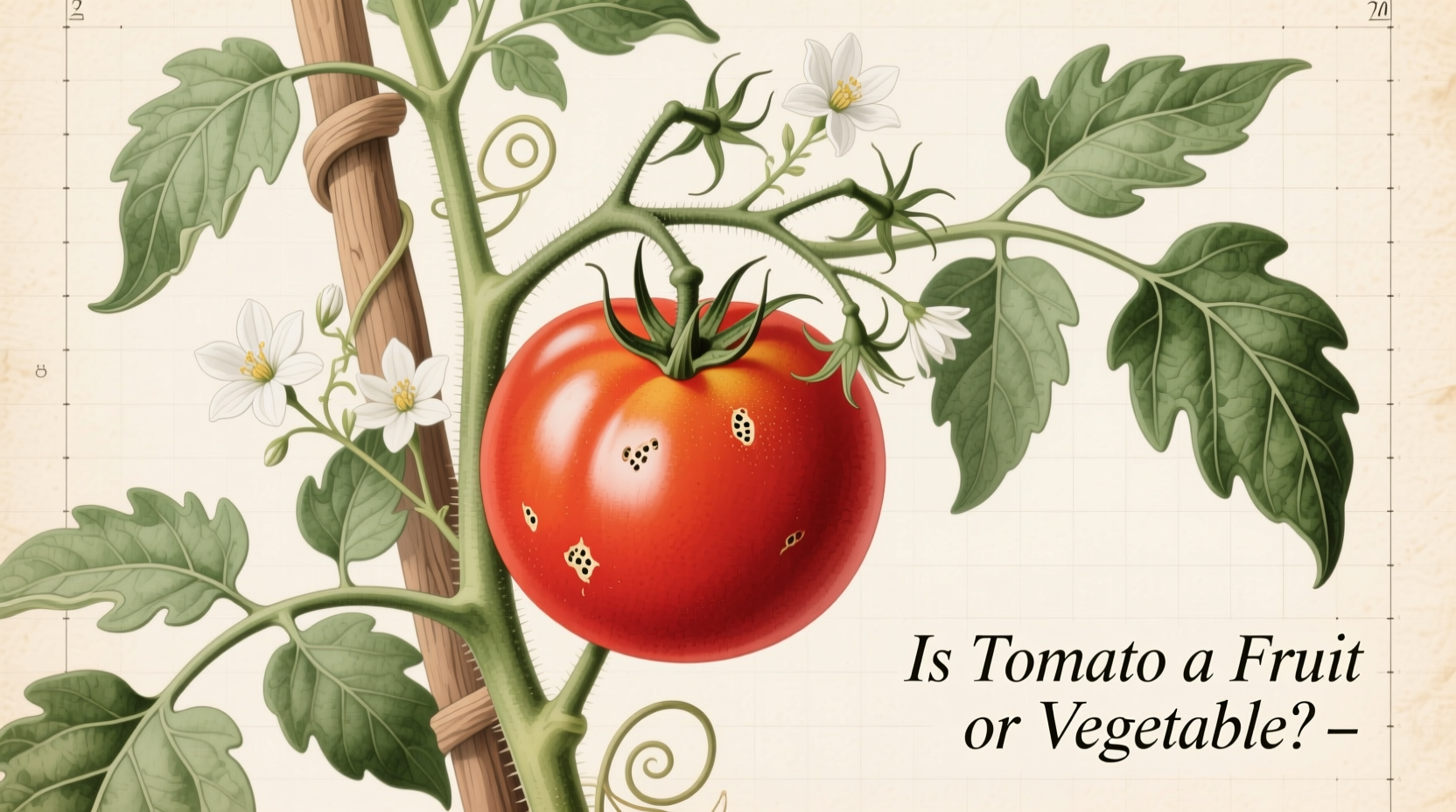Ever found yourself in a heated debate about whether tomatoes are fruits or vegetables? You're not alone. This seemingly simple question has confused home cooks, sparked dinner table arguments, and even reached the US Supreme Court. Understanding the tomato's dual identity isn't just academic—it affects how you cook, garden, and even how food is regulated. Let's cut through the confusion with clear, science-backed explanations.
Why the Tomato Classification Confusion Exists
The tomato identity crisis stems from two different classification systems: botanical science versus culinary tradition. When you ask is tomato fruit or vegetable, the answer depends entirely on which perspective you're using. This isn't just semantic quibbling—it reflects how we categorize the natural world versus how we interact with food in daily life.
Botanical Reality: Tomatoes Are Undeniably Fruits
In botanical terms, a fruit develops from the flower of a plant and contains seeds. By this scientific definition, tomatoes unquestionably qualify as fruits. They form from the ovary of the tomato flower and house numerous seeds within their fleshy interior.
Botanists at institutions like the Royal Botanic Gardens, Kew confirm that tomatoes (Solanum lycopersicum) belong to the nightshade family and share fruit characteristics with peppers, eggplants, and cucumbers—all technically fruits despite culinary treatment as vegetables. The USDA Agricultural Research Service consistently classifies tomatoes as fruits in their botanical databases.
| Classification System | Tomato Status | Key Determining Factors |
|---|---|---|
| Botanical | Fruit | Develops from flower, contains seeds, fleshy pericarp |
| Culinary | Vegetable | Savory flavor profile, used in main dishes/salads |
| Legal (US) | Vegetable | 1893 Supreme Court ruling for tariff purposes |
The Culinary Perspective: Why Chefs Treat Tomatoes as Vegetables
Despite their botanical classification, professional chefs and home cooks universally treat tomatoes as vegetables. This practical approach stems from flavor profile and usage patterns:
- Flavor characteristics: Tomatoes have low sugar content (2-3%) compared to typical fruits (10-20%)
- Culinary applications: Used in savory dishes like sauces, salads, and stews rather than desserts
- Cultural tradition: Historical usage patterns in Mediterranean, Latin American, and global cuisines
The American Culinary Federation recognizes this practical distinction, noting that culinary classification depends on flavor profile and usage rather than botanical accuracy. When exploring is tomato a fruit or vegetable in cooking, the answer consistently leans toward vegetable in professional kitchens worldwide.

Legal History: The Supreme Court Case That Changed Everything
The tomato's dual identity reached the highest court in the land in 1893. In Nix v. Hedden, the US Supreme Court unanimously ruled that tomatoes should be classified as vegetables for tariff purposes. This landmark decision established that common usage, not botanical accuracy, determines legal classification.
| Year | Event | Classification Impact |
|---|---|---|
| 1883 | Congress passes Tariff Act taxing vegetables | Tomatoes subject to 10% duty if classified as vegetables |
| 1893 | Nix v. Hedden Supreme Court decision | "Tomatoes are vegetables" based on common usage |
| 1987 | Tennessee designates tomato as official state vegetable | Recognizes culinary tradition over botanical fact |
| 2001 | EU classifies tomatoes as fruits for processing standards | Highlights regional differences in classification |
This legal precedent remains relevant today. The US Department of Agriculture continues to classify tomatoes as vegetables in nutritional guidelines and school lunch programs, while botanical references maintain their fruit status. Understanding why is tomato considered a vegetable legally provides insight into how food policy often prioritizes practical usage over scientific accuracy.
When Classification Actually Matters: Practical Implications
Knowing whether tomatoes are fruits or vegetables isn't just trivia—it affects real-world decisions:
Cooking Applications
Tomatoes' acidic nature (pH 4.3-4.9) makes them behave more like fruits in canning and preserving. When exploring is tomato fruit or vegetable for canning purposes, their fruit-like acidity actually simplifies preservation compared to low-acid vegetables.
Gardening Considerations
As fruiting plants, tomatoes require different care than true vegetables. They need:
- Consistent watering to prevent blossom end rot
- Staking or caging for fruit support
- Longer growing seasons than most vegetables
Nutritional Context
The USDA's MyPlate guidelines place tomatoes in the vegetable group, recognizing their nutrient profile aligns more with vegetables (high in vitamin C, potassium, lycopene) than typical fruits. When considering is tomato a fruit or vegetable nutritionally, the vegetable classification better reflects its dietary role.
Other Foods With Dual Classification
Tomatoes aren't alone in this classification confusion. Several common foods straddle the fruit-vegetable divide:
- Cucumbers: Botanically fruits, culinarily vegetables
- Peppers: All varieties are fruits despite savory usage
- Eggplants: Berries by botanical definition
- Zucchini: Technically a fruit, used as vegetable
- Avocados: Botanical fruits with vegetable-like culinary treatment
These examples highlight why understanding the distinction between botanical and culinary classification matters when exploring food science topics like is tomato fruit or vegetable in different contexts.
Resolving the Debate: Why Both Answers Are Correct
The tomato classification question persists because both answers are technically correct—they just apply to different contexts. When someone asks is tomato a fruit or vegetable, the most accurate response considers the framework of the question:
- Scientific context: Always a fruit
- Culinary context: Treated as a vegetable
- Legal context: Classified as vegetable in US
- Nutritional context: Grouped with vegetables
This dual identity isn't a contradiction—it reflects how different fields approach classification based on their specific needs. The next time you encounter the is tomato fruit or vegetable debate, you'll have the authoritative knowledge to explain why both perspectives have validity.











 浙公网安备
33010002000092号
浙公网安备
33010002000092号 浙B2-20120091-4
浙B2-20120091-4